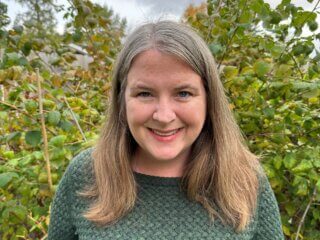 Image: CrosbyDowntown_BusyStreet.Summer2023-crop
Image: CrosbyDowntown_BusyStreet.Summer2023-crop
Small Communities Grants
Funding resources, skills, and needed system changes in rural Minnesota’s smallest communities.
Our Small Communities Grant Program is a program focused on reaching small, often overlooked places, and providing funding for the resources and skills they need to solve community issues. It is one important way we can improve community well-being and begin to reverse decades of fiscal policies and practices that have harmed rural places and the people who live there.
The Small Communities Grant Program will build on the pride rural residents feel for their communities. Rural connection and interdependence can be powerful community forces. When people work together to solve community issues, they create trust, ownership and buy-in which again translates to success with completing projects and initiatives, and ultimately strengthening the community. Activities funded by our Small Communities Grant Program should drive positive economic, physical, and social change in a rural community.
Blandin’s Value Framework
Build Rural Capacity
Strengthening the resources and skills rural MN needs to address community problems and opportunities. We are focusing our funding and programming on strategies that produce measurable, sustainable outcomes in our three impact areas and those that can demonstrate coordinated, regional impact.
Build Connection
Enabling can-do communities that are rich in people-to-people connections and generate opportunity at the individual, community and state levels. Connected individuals stay healthier, are happier, achieve higher education, improve their job outlook and are more likely to have long-term economic upward mobility. Connected communities thrive amidst change, both unintended (disaster, economic uncertainty) and proactive (future-forward community initiatives).
Focus Areas
Small Communities Grants will be made in the following three categories listed. This does not imply applicants submit proposals based on the examples outlined below. We are interested in your own creative ideas to move small places forward.
Planning for a small communities initiative.
- Engage community in evaluating its financial, cultural, and natural assets to support community development planning.
- Plan and design programs, inclusive community events, public spaces, and community amenities that improve wellbeing and increased livability.
- Research to support community planning or increased access to grants and other financial resources.
Executing a small communities initiative.
Implementing community initiatives, including events, discussions and gatherings.
Creation, enhancement or revitalization of indoor and outdoor physical spaces, such as:
- Community gathering and ceremonial places.
- Community centers.
- Downtowns/Main Street projects.
- Repurposing buildings.
- Redevelopment.
- Addressing brownfields.
- Libraries.
- Revitalization and capital improvements.
- Parks and trails.
Building small community skills and attracting resources.
Build the skills and resources of a community or organizations to drive positive economic, physical and social changes:
- Grant-writing assistance.
- Technical assistance.
- Consulting expertise, including inter-generational knowledge sharing.
- Leadership skill-building.
- Research to support skill and resource-building.
- Collaboratively changing how systems work and the outcomes they produce.
Outcomes We Seek
Proposed projects should impact one or more of the following objectives and should include a description of how your organization will measure progress toward those. It is acceptable to measure “what happened/what’s different” (qualitative data) along with or instead of “how many or how much” (quantitative) because impact in small rural communities is often challenging to demonstrate with numbers only.
1. Bring about positive, visible change in the community, including increasing community/leadership engagement, planning, nurturing community pride and revitalization.
Possible metrics: visible community change in structures or enhancements, new construction, beautification, increased civic engagement, survey results showing increased pride in place.
2. Engage in productive discourse around issues affecting small, rural Minnesota communities, including race, class, gender, and other self-identified divides.
Possible metrics: notable signs of a more connected, engaged and less divisive community, including possible survey results, social media tenor, examples of new community cohesion, policy changes or advocacy.
3. Prepare for the future by enhancing community aesthetics and amenities, cooperating with neighboring communities for mutual benefit, and laying the groundwork for future development.
Possible metrics: visible community change in structures and amenities, established partnerships with other communities or partners, local business and job growth, and completing professional development and skill building and training opportunities.
Timeline
| Milestone | Date |
|---|---|
| Letter of Inquiry Opens | March 7, 2025 |
| Letter of Inquiry Closed | March 21, 2025 |
| Proposal Opens | March 31, 2025 |
| Proposal Closed | April 21, 2025 |
| Application Review Period | April 22 - May 23, 2025 |
| Organizations Notified of Grant Award | May 23 - 26, 2025 |
| Grant Agreements Issued | May 30, 2025 |
These dates may change depending on the volume of applications received.
Eligibility & Applications
Current grants are available for Itasca County Area non-profit organizations.
Contact Us
We encourage you to reach out to our Grants team members at any time with questions.



